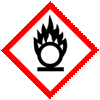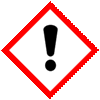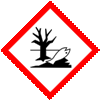Potassium Permanganate SDS, MSDS Sheet |
Muby Chemicals of Mubychem Group, established in 1976, is the original manufacturers of Specialty Chemicals, Pharmaceutical Excipient, Fragrance Food & Flavor chemicals, Reagent Grade Chemicals, Shale Gas Fracturing Chemicals in India. Mubychem Group has several manufacturing facilities spread across Western India and world wide contacts and toll manufacturers. We are exporting globally to countries like USA, Canada, Europe, UAE, South Africa, Tanzania, Kenya, Egypt, Nigeria, Cameroon, Uganda, Turkey, Mexico, Brazil, Chile, Argentina, Dubai, Korea, Vietnam, Thailand, Malaysia, Indonesia, Australia, China, Germany, France, Italy, Portugal etc. The products are offered as per required specifications and in correct shape and size in mm or meshs or microns as specified by the buyer. The participating units have one or more accreditations like FDA - cGMP and GLP approval, ISO-9001 Certified, "REACH" Registered, ISO-14001, ISO/IEC 17025, ISO-22000, FSSC 22000, ISO 45001, Kosher Certified, Halal Certified, HACCP, FSSAI. We offer Commercial Pure & IP BP EP Ph Eur USP NF JP FCC Food Grade Analytical Reagent Grades of Chemicals |
| Bookmark this Web Site |
Search our website here:







Buy Potassium Permanganate; Door Delivery
Potassium Permanganate Commercial Pure & BP USP IP Manufacturers Specifications
Potassium Permanganate SDS GHS, Safety Data Sheet
MSDS Sheet, Material Safety Data Sheet 05-Dec-20
1. PRODUCT DESCRIPTION
Product Name & Other Names: Potassium permanganate; Permanganic acid, potassium salt.
CAS Number: 7722-64-7
EINECS EC Number: 231-760-3
Formula: KMnO4
Molecular Weight: 158.03
Relevant uses and uses advised against (if any): Industrial Manufacturing.
Suppliers: As per letterhead.
2. HAZARD IDENTIFICATION
GHS, Globally Harmonized System Classification in accordance with 29 CFR 1910
Classification according to Regulation (EC) No 1272/2008
Oxidizing solids Category 2, H272
Acute toxicity, oral Category 4, H302
Acute toxicity, dermal Category 4, H312
Skin corrosion Category 1C, H314
Hazardous to the aquatic environment, acute hazard Category 1, H400
Labeling according GHS & Regulation (EC) No 1272/2008
| GHS Label Elements  Oxidizing Solid |
|
GHS Label Elements |
Signal Word: Danger
Hazard Statements:
H272: May intensify fire; oxidizer.
H302: Harmful if swallowed.
H312: Harmful in contact with skin.
H314: Causes serious skin burns and eye damage.
H400: Very toxic to aquatic life.
Precautionary Statements:
P210: Keep away from heat/sparks/open flames/hot surfaces. - No smoking.
P220: Keep/Store away from clothing/other combustible materials.
P221: Take any precaution to avoid mixing with combustibles.
P260: Do not breathe dust/fume/gas/mist/vapors/spray.
P264: Wash ... thoroughly after handling.
P270: Do not eat, drink or smoke when using this product.
P280: Wear protective gloves/protective clothing/eye protection/face protection.
P273: Avoid release to the environment.
P280-Wear protective gloves/protective clothing/eye protection/face protection.
P302+352: IF ON SKIN: Wash with soap and water.
P305+P351+P338: IF IN EYES: Rinse cautiously with water for several minutes. Remove contact lenses, if present and easy to do. Continue rinsing.
P314: Get Medical advice/attention if you feel unwell.
P362: IF SWALLOWED: Call a POISON CENTER or doctor/physician if you feel unwell.
P337+P313 If eye irritation persists: Get medical advice/ attention.
P370+378: In case of fire: Use dry chemical, CO2 or appropriate foam for extinction.
P391: Collect spillage.
P501: Dispose of contents/container in accordance with local/regional/national/international regulations.
Classification according to EU Directives 67/548/EEC or 1999/45/EC:
Hazard Symbols:
O Oxidizing.
Xn Harmful.
C Corrosive.
N Dangerous for the environment.
Risk Phrases:
R 8 = Contact with combustible material may cause fire.
R21/22 Harmful in contact with skin and if swallowed.
R34 = Causes burns.
R41 = Risk of serious damage to eyes
R50 = Very toxic to aquatic organisms.
3. COMPOSITION/INFORMATION ON INGREDIENTS
Product Name & Other Names: Potassium Permanganate; Permanganic acid, potassium salt
CAS No.: 7722-64-7
EINECS EC Number: 231-760-3
4. FIRST AID MEASURES
Always seek medical attention after first aid measures are provided.
Emergency and First Aid Procedures:
Eyes - Immediately flush eyes with plenty of water for at least 15 minutes, lifting lower and upper eyelids occasionally. Get medical attention immediately.
Skin - Thoroughly wash exposed area for at least 15 minutes. Remove contaminated clothing. Launder contaminated clothing before reuse. Get medical attention at once.
Ingestion - If Potassium permanganate is swallowed, DO NOT INDUCE VOMITING. Give large quantities of water. Never give anything by mouth to an unconscious person. Get medical attention immediately.
Inhalation - Remove to fresh air. Give oxygen if breathing is difficult; give artificial respiration if breathing has stopped. Keep person warm, quiet and get medical attention at once.
5. FIREFIGHTING PROCEDURES
Extinguisher Media: Use dry chemical, CO2 or appropriate foam.
Auto ignition Temperature: N/A
Unusual Fire and Explosion Hazards: Potassium permanganate is strong oxidizer. Contact with combustible materials, flammable materials or powdered metals can cause fire or explosion.
Special Information: In the event of a fire, wear full protective clothing and NIOSH-approved self-contained breathing apparatus with full face piece operated in the pressure demand or other positive pressure mode. At high temperatures under fire conditions, it may produce toxic or irritating fumes. Fire-extinguishing work is done from the windward and the suitable fire-extinguishing method according to the surrounding situation is used. Uninvolved persons should evacuate to a safe place.
6. SPILL OR LEAK PROCEDURES
Personal precautions, protective equipment and emergency procedures: Ventilate area of spill. Clean-up personnel should wear proper protective equipment. Avoid creating dust. Sweep or scoop up and containerize for disposal. Avoid breathing dust/fumes/gas/mist/vapors/spray. Use individual protective equipment (waterproof boots, suitable protective clothing, safety glasses, etc.). Restrict unprotected personnel from the area. Prevent any contact with hot surfaces. Do not approach facing the wind. Do not touch the spilled material.
Environmental precautions: Do not let the product enter drains, soil or water sources.
Methods and materials used for containment Cleanup procedures and Storage: Contain spilled material. Cover with an inert, non-combustible absorbent material, (e.g. sand, earth, diatomaceous earth, vermiculite). Vacuum or sweep-up and remove to an approved disposal container.
7. SPECIAL PRECAUTIONS
Precautions for safe handling: Apply according to good manufacturing and industrial hygiene practices. Ensure proper ventilation. Wash thoroughly after handling. Do not drink, eat or smoke while handling. Avoid contact with skin, eyes and clothing. Minimize dust generation. Avoid breathing dust/fumes/gas/mist/vapors/spray. Avoid contact with eyes, skin, and clothing. Keep container tightly closed. Avoid ingestion and inhalation. Use individual protective equipment (waterproof boots, suitable protective clothing, safety glasses, etc.). Prevent any contact with hot surfaces.
Conditions for safe storage, including any incompatibilities: Store in cool, dry and ventilated area away from heat sources and protected from sunlight in tightly closed original container. Keep air contact to a minimum. Do not leave the material container open. Store protected from heat, sparks and ignition sources and incompatible materials. Avoid contact with skin and eyes. Avoid inhalation of dust/mist/vapor. Do not store with incompatible materials like organic materials, combustible materials, strong reducing agents, strong acids, peroxides, alcohols, chemically active metals, flammable and combustible materials.
8. SPECIAL PROTECTION INFORMATION
Exposure Limits:
Chemical Name: Manganese and inorganic compounds, as Mn
ACGIH (TLV): TWA: 0.2 mg/m3(A4)
OSHA (PEL) : STEL: C 5 mg/m3
NIOSH (REL): TWA: 1 mg/m3 / STEL: 3 mg/m3
Appropriate engineering controls: Handle in accordance with good industrial hygiene and safety practice. Wash hands before breaks and at the end of workday. Emergency eye wash fountains and safety showers should be available in the immediate vicinity of any potential exposure. Ensure adequate ventilation.
Respiratory Protection (Specify Type): None needed under normal conditions of use with adequate ventilation.
Ventilation System: A system of local and/or general exhaust is recommended to keep employee exposures as low as possible. Local exhaust ventilation is generally preferred because it can control the emissions of the contaminant at its source, preventing dispersion of it into the general work area.
Personal Respirators (NIOSH Approved): For conditions of use where exposure to dust or mist is apparent and engineering controls are not feasible, a particulate respirator may be worn. For emergencies or instances where the exposure levels are not known, use a full-face positive-pressure, air-supplied respirator.
Skin Protection: Wear protective gloves and clean body-covering clothing.
Eye Protection: Use chemical safety goggles and/or full face shield where dusting or splashing of solutions is possible. Maintain eye wash fountain and quick-drench facilities in work area.
Other Control Measures: Maintain good housekeeping in work area. Dust deposits on floors and other surfaces may pick up moisture and cause the surfaces to become slippery and present safety hazards. Handle in accordance with good industrial hygiene and safety practice. Wash hands after handling.
9. PHYSICAL DATA
Appearance: Dark purple to bronze crystals.
Odor: Odorless.
Odor threshold: Not available.
pH: Not available.
Relative density: 2.7
Melting Point: Approximately 240C
Initial boiling point and boiling range: Not available.
Flash point: Not available.
Auto-ignition temperature: Not available.
Decomposition temperature: Not available.
Upper/lower flammability or explosive limits: Not available.
Vapor pressure: Not available.
Vapor density: Not available.
Evaporation rate: Not available.
Flammability (solid, gas): Not available.
Partition coefficient: n-octanol/water: Not available.
Solubility in Water: Moderate
Viscosity: Not available.
Formula: KMnO4
Molecular Weight: 158.03
10. REACTIVITY DATA
Stability: Stable under ordinary conditions of use and storage.
Conditions to Avoid: Heat
Incompatibility (Materials to Avoid): Organic materials, combustible materials, strong reducing agents, strong acids, peroxides, alcohols, chemically active metals.
Hazardous Decomposition Products: None
Hazardous Polymerization: Will not occur.
11. TOXICITY DATA
Toxicity Data: Oral Rat LD50: 750 mg/kg
Carcinogenicity: This substance has no evidence of carcinogenic properties.
Mutagenic Effects: Not available.
Developmental Toxicity: Not available.
Reproductive Effects: No information available.
12. ECOLOGICAL DATA
AQUATIC TOXICITY
LC 50 (Rainbow trout, donaldson trout (Oncorhynchus mykiss), 96 h): 0.267 - 0.442 mg/l Mortality
LC 50 (Striped bass (Morone saxatilis), 96 h): 0.348 mg/l Mortality
LC 50 (Bluegill (Lepomis macrochirus), 96 h): 0.713 - 0.959 mg/l Mortality
Toxicity to fish, Gambusia affinis (fish, fresh water), LC100 = 18 mg/L/24 hours
Toxicity to daphnia and other aquatic invertebrates: Daphnia magna (Crustacea), EC0 = >0.63 mg/L
Toxicity to algae: Anabaena sp. (Algae), EC50 = <0.5 mg/L/18 days/growth rate
Results of PBT and vPvB assessment: This substance/mixture contains no components considered to be either persistent, bioaccumulative and toxic (PBT), or very persistent and very bioaccumulative (vPvB) at levels of 0.1% or higher.
13. DISPOSAL INFORMATION
Waste Disposal Methods: Dispose in accordance with all applicable regulations.
14. TRANSPORT INFORMATION
DOT USA, TDG Canada & ADR/RID Europe:
UN Number: UN 1490
Proper Shipping Name: Potassium permanganate
Hazard Class: Oxidizer
Packing Group: II
Division: 5.1
IMDG/IMO & IATA/ICAO:
UN number: UN 1490
Proper Shipping Name: Potassium permanganate
Transport hazard class(es): 5.1
Marine Pollutant: No
Packing group: II
15. REGULATORY INFORMATION
USA:
SARA Section 302 Extremely Hazardous Substances: None of the chemicals in this product have a TPQ.
SARA Codes CAS # 7722-64-7: acute, flammable. See section 2.
Section 16 - Additional Information
European Labeling in Accordance with EC Directives:
H272: May intensify fire; oxidizer.
H302: Harmful if swallowed.
H312: Harmful in contact with skin.
H314: Causes serious skin burns and eye damage.
H400: Very toxic to aquatic life.
Hazard Symbols:
O Oxidizing.
Xn Harmful.
C Corrosive.
N Dangerous for the environment.
Risk Phrases:
R 8 = Contact with combustible material may cause fire.
R21/22 Harmful in contact with skin and if swallowed.
R34 = Causes burns.
R41 = Risk of serious damage to eyes
R50 = Very toxic to aquatic organisms.
DISCLAIMER: The information and recommendations set forth herein (hereinafter "Information") are presented in good faith and believed correct as of the date hereof. It is compiled from various sources and it is not necessarily all inclusive nor fully adequate in every circumstance. In addition, these suggestions should not be confused with nor followed in violation of applicable laws, regulations, rules or insurance requirements applicable. This MSDS sheet is intended only as a guide to the appropriate precautionary handling of the material by a properly trained person using this product. Individuals receiving the information must exercise their independent judgment in determining its appropriateness for a particular purpose.
Contact
MUBY CHEMICALS
S-8, SARIFA MANSION, 2ND FLANK ROAD, CHINCHBUNDER, MUMBAI 400009, INDIA
TEL: (OFFICE) +912223770100, +912223726950
Current Date Time in India GMT+5:30 hours
e-mail: info@mubychem.com
USA, Canada, Mexico and other American
neighbouring buyers may
e-mail: us@mubychem.com
Call toll-free 1-877-682-9243 (1-877-MUBYCHEM)

Copyright and Usual Disclaimer is Applicable.
Last
5 October, 2023




Exporters to USA Canada UAE Europe South Africa Tanzania Kenya Uganda Egypt Nigeria Turkey Mexico Brazil Argentina Chile Dubai etc.
I shall pass through this world, but once. If therefore, there is any good that I can do, or if there is any favor that I can show to a fellow human being, let me do it now. Let me not defer or neglect it. For I shall not tread this way again

















